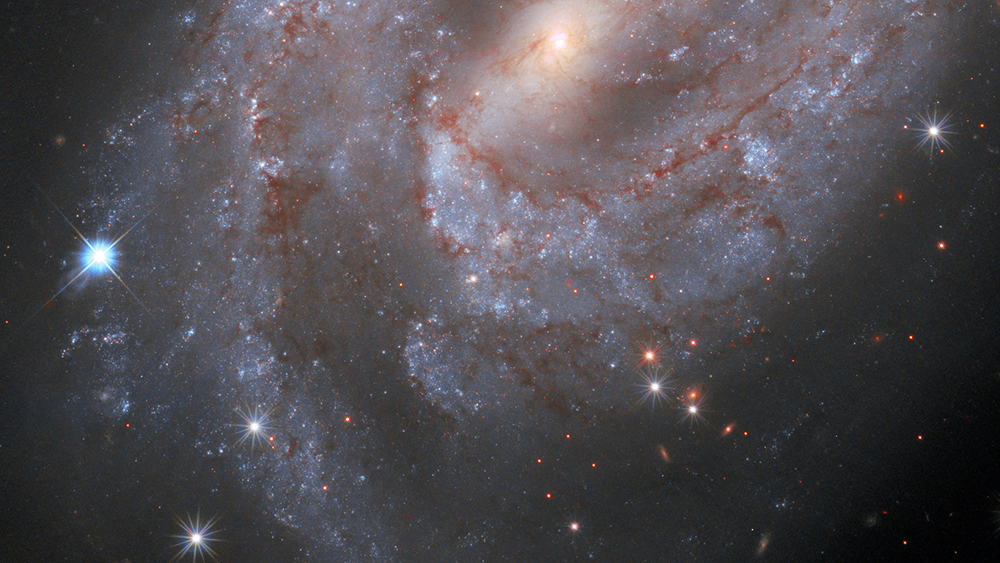Koichi Itagaki, an amateur astronomer, first found the exploding star SN 2018gv as a super-bright spot amid spiral galaxy NGC 2525 in January 2018.1 Professional astronomers then trained the Hubble Space Telescope onto the fast fading object. Reporting on the new video, NASA news described the fading process:
The type of supernova seen in this sequence originated from a burned-out star—a white dwarf located in a close binary system—that is accreting material from its companion star. When the white dwarf reaches a critical mass, its core becomes hot enough to ignite nuclear fusion, turning it into a giant atomic bomb. This thermonuclear runaway process tears the dwarf apart. The opulence is short-lived as the fireball fades away.1
At a basic level therefore, we see stars fade. But do we see stars form? Secular scientists believe stars still form today, but they have never directly observed it. Misleading claims of “newborn” stars refer merely to stars that are thought to have formed more recently than most—no one has actually witnessed it.2 No astronomer—amateur or professional—has yet reported detecting a spot in space where a star ignited. News outlets would doubtless trumpet such an event. So, if we don’t see them form naturally, then how did they get there?
With so many people owning telescopes these days, shouldn’t some folks have recorded stars forming by now? Secular scientists estimate that hundreds of new stars should be forming just within our own Milky Way Galaxy every year. Yet, the few they tag as freshly formed stars were already shining.3 A steady string of new lights blinking on would confirm the concept that our universe’s many stars formed with no help from any Creator. Instead, we only see them blinking out.
Thus, stars fade but they don’t form, and the Bible indicates the same. Genesis 1:16 reports star formation in the past tense, as though God made stars through a miracle. Based on this, we should not expect to see star formation, and we don’t.4
Nor does the Bible speak of stars forming at later points. It does, however, speak of a cursed creation, where features fade and creatures crumble. Romans 8:22 says, “For we know that the whole creation groans and labors with birth pangs together until now.” Those birth pangs, including fast-fading of supernovas, point to God’s promise to give birth to a whole new heavens and earth at some future moment and do not refer to a continuous birth of new stars today. Biblically, we should expect to see stars fading, and we do.
While the Bible is not an astronomy textbook, the way that Scripture deals with history, even the history of stars matches what modern telescopes amplify.
Everything the Bible touches on, including the human heart, also fits what we observe. Jeremiah 17:9 describes that old heart as “deceitful above all things, and desperately wicked; who can know it?” With stars blinking out and not on, we’re going to need new stars that don’t fade but will burn forever. And with hearts full of sin that earns us death, we’re going to need new and sinless hearts that last forever.5 The Bible promises both.
The fast fade of SN 2018gv reminds us that the Bible got it right when it comes to an originally good creation that God cursed because man sinned. This same Bible says that heavenly luminaries will fall away6 before God creates new heavens.7 It will be a fitting new universe into which “penitents with righteousness” can carry their new hearts.8
References
1. Garner, R., ed. Hubble Watches Exploding Star Fade Into Oblivion. Posted on NASA.gov October 1, 2020, accessed October 7, 2020.
2. Mathewson, S. Astronomers spot hundreds of baby stars and planet-forming disks. Space.com. Posted on Space.com March 1, 2020, accessed October 8, 2020.
3. Cline, J. and G. Novak. How a Star is Born (And Why We Don’t Know Why). Helix. Posted on helix.northwestern.edu August 14, 2009, accessed October 8, 2020.
4. Even Big Bang proponent and astronomer Neil deGrasse Tyson has acknowledged that “. . . if none of us knew in advance that stars exist, front line research would offer plenty of convincing reasons why stars could never form.” See Tyson, N. D. 2007. Death by Black Hole: And Other Cosmic Quandaries. New York: W. W. Norton & Company, Inc., 187.
5. Romans 6:23.
6. Isaiah 34:4.
7. Isaiah 65:17.
8. Isaiah 1:27.
*Dr. Brian Thomas is Research Associate at the Institute for Creation Research and earned his Ph.D. in paleobiochemistry from the University of Liverpool.

















